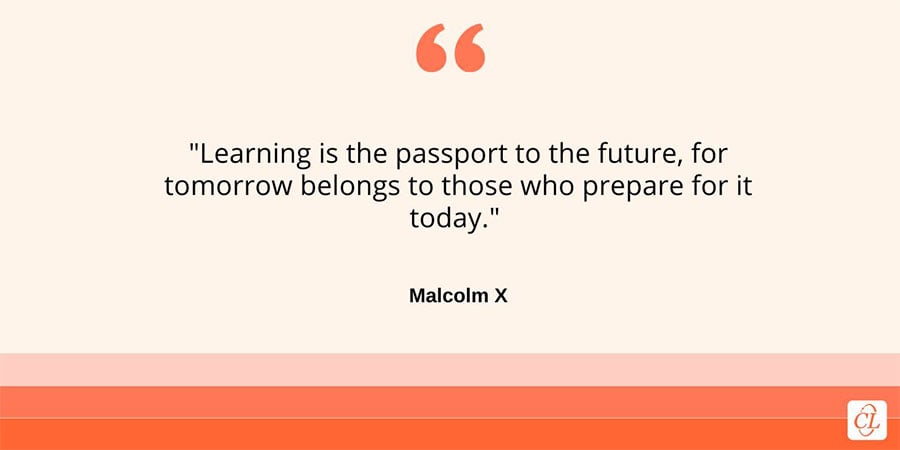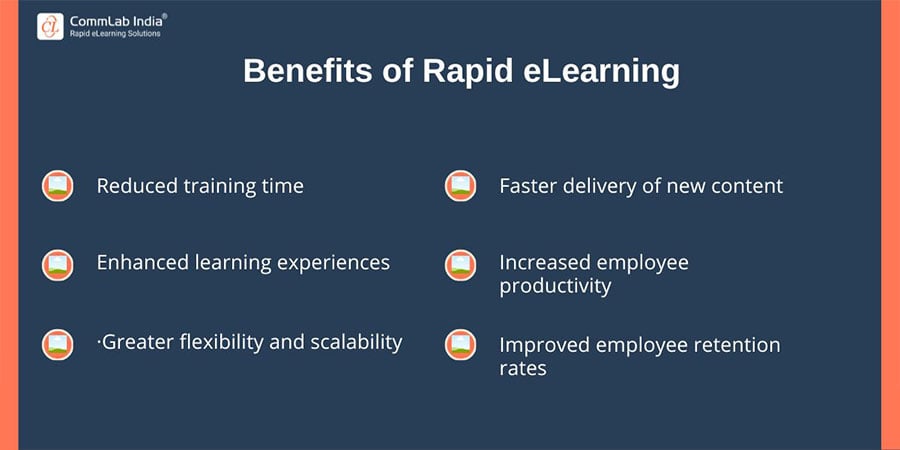5 Reasons Why Rapid eLearning is the Need of the Hour in Corporate Training

Rapid eLearning is fast becoming the new way of delivering corporate training in organizations today. With its flexibility, affordability and effectiveness in helping organizations improve business performance and develop talent rapidly, it is the preferred mode of training delivery for several firms today.
But what are the key factors driving this change? What are the benefits of rapid eLearning and why should organizations go for it? In this article, we discuss the key factors influencing the changing trends in eLearning and the rise of rapid eLearning in corporate circles.
Curious to Know What Triggered the Adoption of Rapid eLearning in the eLearning Space?
Here is the list of trends –
- Changes in Learning Styles
- Advancements in Technology
- Shifting Workplace Cultures
- Changes in the Business World
- Evolution of the Learning Process
Why is Rapid eLearning Needed in Corporate Training Today?
Rapid eLearning has become a necessity in the corporate world. With employees constantly on the go and on their phones, it is imperative that companies have a way to educate their employees in a fast, effective way. Here, we look at why Rapid eLearning is needed:
1. Changes in Learning Styles Have Changed
The rapid growth of technology has changed the way we learn. Learning is focused on embracing technology and finding new ways to take in information. For this reason, there is a need to move beyond traditional methods in corporate training.
Traditional training is still relevant. But traditional training suffers from a fundamental flaw—a one-size-fits-all approach. In an ideal learning scenario, employees are able to choose how they learn new information and what medium works best for them. With more and more firms turning to eLearning as a way to support employee training efforts, we can no longer ignore effective ways to accommodate different learning styles.
2. Advancements in Technology
Technology has improved tremendously over the last decade. One major development is in how we learn. There was a time when people would spend hours in a classroom listening to lectures, but now they can sit at home and take online courses at their own pace.
Rapid eLearning is the future of corporate learning. It’s a new way of thinking about corporate training that focuses on getting your employees up to speed as quickly as possible, with the goal being to reduce the time it takes for your workforce to achieve competency and proficiency in their jobs.
It also considers how much time employees spend learning, and how much time they spend actually doing their jobs.
It Saves Time
You no longer have to schedule your classes around office hours or wait until everyone is free. You also don’t have to invest in hardware such as computers and projectors for online training sessions. All you need is a mobile device/laptop and an internet connection. Rapid eLearning allows flexibility in learning times; this convenience may be one reason why it is becoming so popular.
→ Access Now: Rapid eLearning and the 4 Rs [Webinar Recording]
It Eliminates the Cost of Travel
In addition to saving time, you also save money because you don’t need to fly team members out from various locations to attend a training session. This also saves a lot of their time.
It Promotes Knowledge Retention
When people struggle with something, they often forget what they learned very quickly. With rapid eLearning, understanding comes more quickly since the content is typically shorter and simpler than long-form instructional content.
Rapid eLearning offers employees the chance to take regular breaks from their workstations by allowing them to learn new skills online through short videos or interactive exercises instead of reading text-heavy manuals or listening to podcasts. This allows them to continue working while simultaneously giving them an opportunity to refresh their minds with some new information so that they can come back refreshed later on! All in all, this contributes to greater retention rates.
3. Shifting Workplace Cultures
With rapid changes in technology and the business environment, organizations have to change as well. Employees are now more tech savvy than ever before. They are constantly upgrading their skillset and evolving faster than the organizations can keep up. The workplace has changed completely with new-age employees expecting a different kind of work environment altogether. Organizations have to make sure that they stay relevant by following suit with changing times or else risk losing out on fresh talent.
Organizations need to keep up with changing times and provide employees with a conducive environment where they can work without any distractions. They have to make sure their employees get access to relevant information and knowledge that will enhance their skillset and make them more productive. Rapid eLearning has emerged as an ideal solution to bridge the gaps between employers and employees. It facilitates just-in-time learning and real-time training.
4. Changes in the Business World
It’s not just about your on-the-job skills anymore. Organizations pay attention to what you can do outside of work as well as what you can do in your current job. This means that your skills and abilities should be branched out much more broadly than before.
This is where eLearning comes in. For example, if an organization wants its employees to improve their communication skills, these objectives can be achieved through online courses designed by the company itself or third-party providers. One of the benefits of going this route is that employees no longer need to leave their desks and commute hours every day for a training course which often results in them being distracted from their regular jobs because of spending time elsewhere.
Organizations also benefit from rapid eLearning, as it allows them to save money as well as time. eLearning is a great cost-effective alternative to getting employees together in one classroom. Online courses are not only convenient but they’re also very easy to create and can be made interactive by adding audio-visuals or links to external websites, which will help engage users with just a few clicks.
5. Evolution of the Learning Process

The term learning process is generally used to refer to how a person learns about a particular topic. This can be done in many different ways – reading a book, watching a video, or listening to someone’s lecture. Once the individual has had time to learn and understand the material, they will either take an exam or essay test in order to show that they have learned what they were supposed to.
Companies used to spend a lot of time and money having people attend formal training classes in order to learn new skills and knowledge that they would need to perform their job. They would have to take time off from work and make sure that someone was watching over their children or pets so that they could attend class.
Today employees can learn almost anything they need to know by watching a video or listening to a podcast. They no longer have to go through long and expensive training classes. Instead, they can watch short videos or listen to audio recordings on their own time and do it on their own schedule. The learning process has evolved and changed thanks to newer technology.
Here’s a video to help you learn more about rapid eLearning
Rapid eLearning and its Effectiveness
Rapid eLearning is a dynamic approach to course development that focuses on speed, efficiency, and learner engagement. By leveraging technology and authoring tools, rapid eLearning enables organizations to create and deploy high-quality online courses in a fraction of the time compared to traditional methods. Its effectiveness lies in its ability to deliver timely and targeted training solutions that meet the needs of modern learners. With rapid eLearning, organizations can reduce costs, increase learner engagement through interactive content and gamification, and easily update and adapt courses as needed.
The rapid eLearning process offers many benefits to organizations, including:

Wrapping Up
Before signing off, let’s highlight that the need to train employees is more urgent than ever before. Rapid eLearning has been found to be highly effective in a diverse range of organizations. Organizations should seriously consider this option as part of their corporate training strategy. We hope the tips in this article were helpful and can help you make the move towards rapid eLearning.
Want to know more about Rapid eLearning and how it addresses the need for speed? This webinar recording on the 4Rs of rapid eLearning will help you understand better.





